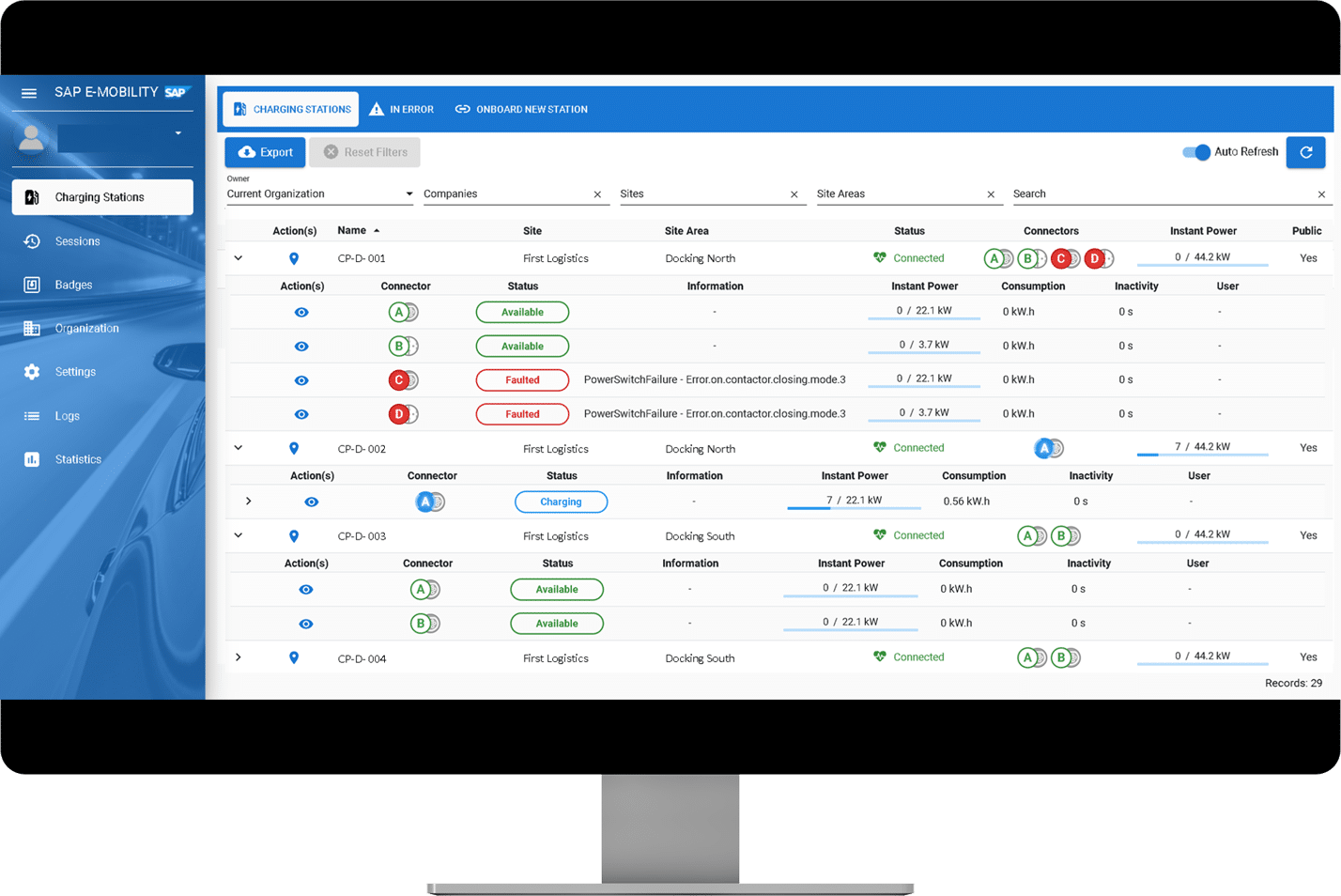Sustainable mobility with SAP E-Mobility: there is now nothing in the way for buying electric vehicles in the future. The new cloud-based solution helps companies to operate electric vehicle charging infrastructures at scale to drive the transition to sustainable and convenient electric mobility.
Electric vehicles (EVs) are becoming increasingly popular. New EV registrations globally rose by 168% during the first half of 2021 compared to 2020. In total, 2.65 million EVs were purchased and have been hitting the streets. According to EV Volume analysts, electric vehicles are trending toward 6.4 million units by the end of 2021.
Charging stations are often a challenge to more rapid EV growth as public stations total 28,000 in the U.S. and 20,000 across Europe. This is reason enough to use the standardized cloud-based SAP E-Mobility solution, planned for availability September 24, 2021, to address not only public but also non-public and semi-public charging points.
As a first step, SAP is addressing company car fleets with charging points at the site or branch as well as at a driver’s home. Since the number of public charging stations is increasing more slowly than their demand, it is particularly relevant to increase the utilization of semi-public charging points and make the best possible use of them. It is also a relief when employees charge company vehicles at the private charging station at home. Complex billing processes, which can be easily and neatly covered, play a decisive role in all scenarios.
However, the solution offers much more; it is the basis for controlling and managing all business processes pertaining to the charging point. Complex processes that were previously prevalent along the value chain — from delivery point operators to companies to electric vehicle owners — are considerably simplified.
Greater Flexibility for Fleet Managers with SAP E-Mobility
Fleet managers also benefit. For example, the solution provides necessary charging data — charging total, location, date, duration, vehicle — to the connected accounting and finance software in order to perform cost center allocations or to initiate a corresponding reimbursement of private electricity costs of the vehicle owner. This happens in an automated manner via standard financial processes, such as travel expense reports.
On the facility manager’s side, SAP E-Mobility means more than just simplified billing. Via a dashboard, the status of all charging stations can be seen at any time, and defective stations can be swiftly repaired. This means facility managers always have an up-to-date overview of the available charging columns, which is also the case on the part of the charging column operators and thus enables comprehensive user and location management.

The results are overall faster workflows and higher charging point availability, supporting a better user experience as well as a positive total cost of ownership (TCO), which helps to further increase the acceptance of electric cars.
In addition, the solution simplifies the deployment of new charging infrastructure and is hardware independent. Operators can easily integrate new charging stations into the network as well as monitor and bill them via standard communication protocols. SAP uses the Open Charge Point Protocol 1.6 standard for this purpose. For charging point operators and businesses, the new solution thus offers maximum flexibility with very little effort.
Extensive Partner Ecosystem Enables Complete Solution
To be able to offer companies a comprehensive solution consisting of hardware, software, services, and support, SAP relies on a network of certified e-mobility partners.
SAP E-Mobility is an important part of this, offering all stakeholders — charging station operators as well as companies and drivers — significantly simpler processes than the market is currently offering. Due to such solutions, not only is the necessary infrastructure expanded more quickly and flexibly, but companies also receive standardized e-mobility processes that support them in achieving their CO2 targets, and at the same time promote the broader use of electric vehicles. One example: partners such as energy service providers implement application scenarios such as “charging from self-generated photovoltaic electricity” or “vehicle to grid” and thus support the production of sustainable energy while simultaneously using the vehicle as a storage location.
Learn more about the new SAP E-Mobility solution.
Hagen Heubach is global vice president and head of the Automotive industry business unit at SAP.



